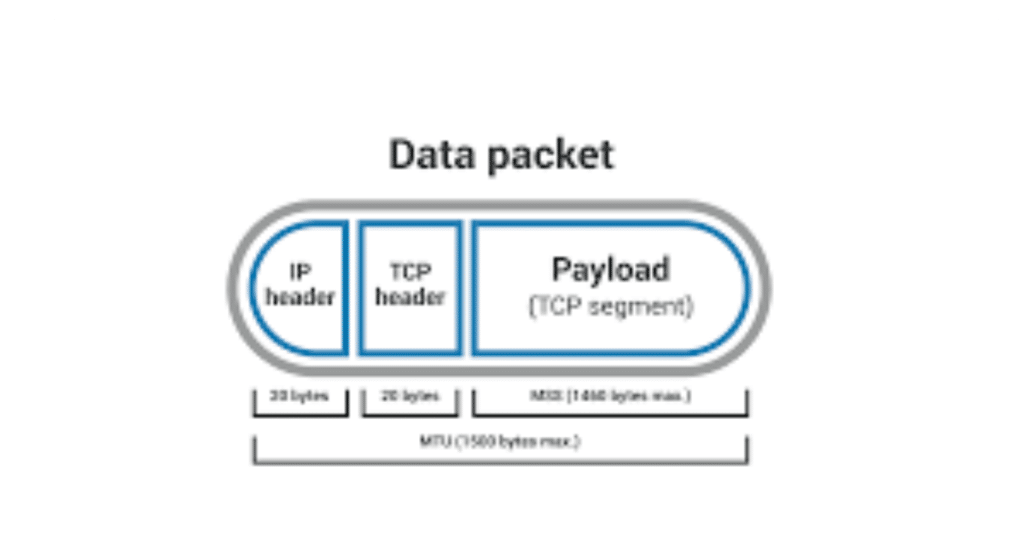In the vast realm of the internet, communication is a complex dance of data packets, and at the forefront of this intricate performance is the IP header. Serving as the gateway to an Internet Protocol (IP) packet, the IP header is vital in the seamless exchange of information across IP networks.
Components of an IP Packet

At its core, an IP packet comprises two essential components: the header and the payload. The header holds the crucial information for addressing and routing, while the payload carries the user data. This two-tier structure ensures the efficient transmission of information within the digital landscape.
Key Information in IP Header
The IP header is a repository of valuable details, encompassing the IP version, source and destination IP addresses, time-to-live (TTL), and additional information. Grasping these intricacies is akin to interpreting the internet’s language, with each component playing a distinct role in guaranteeing precise and punctual data transmission.
Understanding IP Packet Payload

Delving into the payload of an IP packet unveils a world of datagrams and transport layer protocols. Whether it’s data for an internet layer, such as ICMP or ICMPv6, or for a link layer like OSPF, the payload adapts to the network’s specific requirements.
Versions of IP: IPv4 vs IPv6
Two prominent versions of internet protocols take center stage in the evolution of internet protocols: IPv4 and IPv6. IPv4, the fourth iteration, dominates internet traffic, boasting a concise header with thirteen mandatory fields. On the other hand, IPv6, the successor, introduces a different layout and a significantly larger address space.
IPv4 Header Structure
The IPv4 header’s simplicity, with thirteen mandatory fields and an optional options field, defines its efficiency. However, the potential increase in header size with the addition of optional options emphasizes the delicate balance between functionality and overhead.
IPv6 Header Structure
IPv6 brings a more structured approach with a fixed mandatory header and optional extension headers. The advantages of IPv6, including a more extensive address space and improved functionality, position it as the future of Internet communication.
Address Space in IPv6
The divergence between IPv4 and IPv6 becomes evident in their address spaces. While IPv4 faces limitations, IPv6 offers a vast and scalable address space. Yet, the challenge lies in the backward compatibility issues with the prevalent use of IPv4.
Evolution of Internet Protocol

The journey from IPv4 to IPv6 is a testament to the dynamic nature of technology. The historical development, marked by the definition of IPv6 in 1998, highlights the need for scalability and advanced features in modern network infrastructures.
Production Deployment of IPv6
Since its definition, IPv6 has been making strides in production deployment. As it progresses through various stages, the benefits of enhanced security, improved performance, and a more extensive address space become increasingly apparent in practical applications.
Challenges in IPv6 Implementation
However, the path to IPv6 implementation is not without challenges. Addressing concerns regarding backward compatibility and navigating the transition from IPv4 pose obstacles. Innovative solutions are essential to ensure a smooth and efficient adoption of IPv6.
Impact on Internet Traffic
In the current landscape, IPv4 continues to route most internet traffic. However, the growing significance of IPv6 cannot be ignored. Future trends indicate a gradual shift towards IPv6 as the internet evolves, necessitating a balance between the two protocols.
Conclusion on IP Header
In conclusion, the IP header is a linchpin in the vast network of internet communication. Understanding the intricacies of IP headers is paramount, from the nuances of addressing and routing to the evolution of internet protocols. As technology advances, embracing the capabilities of both IPv4 and IPv6 ensures a resilient and future-ready internet infrastructure.
FAQs about IP Header
- Why is the IP header essential in Internet communication?
- The IP header provides crucial information for addressing and routing, facilitating the smooth data exchange across IP networks.
- What are the key components of an IP packet?
- An IP packet comprises a header for addressing and routing and a payload for user data.
- How does IPv6 differ from IPv4 in terms of header structure?
- IPv6 introduces a different header layout, with a fixed mandatory header and optional extension headers, offering improved functionality.
- What challenges are associated with the implementation of IPv6?
- Challenges include addressing backward compatibility concerns and navigating the transition from using IPv4.
- Why is IPv6 considered the future of Internet communication?
- IPv6 offers a more extensive address space, enhanced security, and improved performance, positioning it as a crucial component in the evolving internet landscape.



